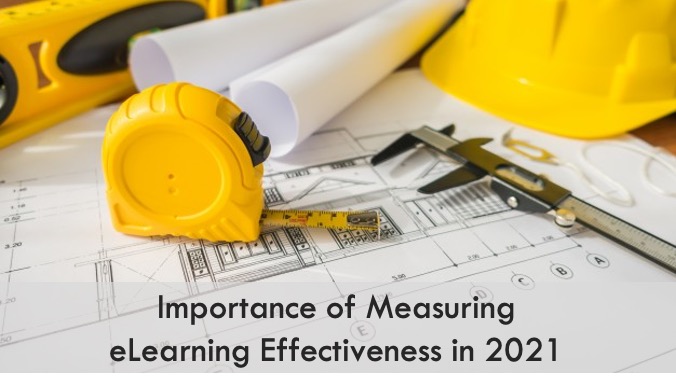Today’s blog entry is all about measuring training effectiveness. 2020 and 2021 had been a mess! And while the year ended, there are no signs of the confusion coming to a halt anytime soon. There were rampant lockdowns globally — forcing entire workforces to shift to remote working paradigms. Come 2022 and 2023, there have not been many changes. Several organizations are still sticking to the remote/hybrid work model. In fact, during this period, “Employers hiring people to work from homes has increased by 3 times compared to the time before the lockdown” — Times Now.
With corporates increasingly embracing the virtual working model, learning and development teams have resorted to new training tools — to meet the changing demands of their learners. What does this entail? Evolved employee training programs, hybrid learning models, and of course, online sessions. Additionally, it means that L&D teams have to think about investing in their training programs.
Read More: Remote Learning in The Post-Pandemic Workplace
Some organizations have increased their allotted budgets for learning and development. And others have made that swift change to spending on new solutions and technology. Of course, this shift means dedicating a considerable amount of resources — time, money, and workforce to enterprise learning. Some of the tools gaining prominence in the post-pandemic era are learning management systems (LMS), content management, content authoring solutions, social learning tools, and training content development. Additionally, research has proved that a significant chunk of companies who had been planning to fastrack their L&D expenses before the pandemic is now hell-bent on spending even more cash on training initiatives.
Read More: 5 Trends Companies are Adopting to Prepare for the Post-pandemic Workplace.

However, here is the thing. You have decided to double or maybe, triple your previous budget in modern methodologies like eLearning. Now, how do you measure training effectiveness? Furthermore, most importantly, why is it necessary to quantify the outcomes of your learning model? You’re going to need to show stakeholders that increasing the L&D budget will yield a return on investment for the business.
Ad: PlayAblo’s Enterprise-Grade Micro-Learning platform is for the modern corporate learner. Moreover, micro-Learning, along with assessments and gamification features, ensures learning outcome measurement along with sustained engagement.
Find out more and request a custom demo!
Read More: Calculating ROI on LMS Investment
In short, when you justify your investment in a training program, you have to do that with proof. You cannot merely talk your way out and convince the management to embrace a new learning tool. Again, you have to solidify your case with metrics and objective key performance indicators (KPIs). Moreover, there has to be irrefutable evidence that your efforts will positively impact your employees. Furthermore, after a session, learners must demonstrate that they can retain information, are confident in the job, and apply their acquired knowledge to solve real-life problems at the workstation.
Hence, to cut a long story short, showcasing training effectiveness and proving the impact of learning is not a luxury but a necessity. Let’s explore how to track employee training in more detail.
Why Should You Measure Training Effectiveness?
Measuring training effectiveness lends you deeper insights and generates metrics, which help you separate an efficient learning program from an inefficient one. How? Read on!
- Effective Time Management: Let’s assume that your LMS already embeds full-fledged training assessments, automated questionnaires, built-in benchmarks, and reporting dashboards. Therefore, what is the result? You drastically reduce the hours spent on manual evaluations.
- Measurable Business Goals: Measuring training effectiveness enables you to quantify your company’s learning investment. Hence, it allows you to make data-driven decisions, which will positively impact your people and, thereby, your business.
- Increased Learner Engagement: Quantifiable training programs boost learner engagement. It increases manager involvement and thereby enhances your post-training response rates.
- Data-driven Decisions: Quantifiable data allows you to assess your learning programs. Hence, you can identify gap areas and decide on which parts of your learning program need improvement.
With PlayAblo, you can effortlessly demonstrate that learning is a strategic investment. Additionally, our analytical dashboard makes it easy to evaluate and assess training results and then interlinks it to improvements in employee performance. Also, you can track new knowledge and skillsets acquired by your workforce.
Read More: Measuring Employee Training Progress. Why and How to Do it Right!
Ad: PlayAblo’s Enterprise-Grade Micro-Learning platform is for the modern corporate learner. Moreover, micro-Learning, along with assessments and gamification features, ensures learning outcome measurement along with sustained engagement.
Find out more and request a custom demo!
Conclusion
In the post-pandemic era, if you have already embraced an online training model to meet the evolving needs of your learners and your business, you will have to go for measuring training effectiveness. Additionally, whatever the allotted budget, you should prove the impact of learning in your organization. And the good news? This job is made extremely easy with a comprehensive, quantifiable solution like PlayAblo!







2 Comments
Comments are closed, but trackbacks and pingbacks are open.